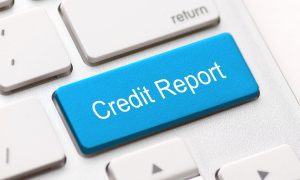
While there are some differences between the previous models, your credit score will likely remain good. Also, poor scores will not go away. Each of the credit scoring models uses a different method to calculate your score. However, they all have the same goal: predicting the risk of a consumer's credit. That means that your score will reflect this risk.
New credit scoring model
The FICO 10 credit score model will be made available to all three credit rating agencies by the end 2020. It is expected it will increase the credit scores and decrease the scores of 110 million additional consumers. It uses trended data to predict the likelihood of default. Consumers with a strong payment history and low balances will generally have a higher FICO score.
The new FICO 10 scoring model uses a multi-dimensional approach to credit scoring. It includes trends data on revolving amounts, minimum payment requirements, amount paid toward dues. This combination allows the FICO10 model to identify consumers who have paid their bills on time. This approach reduces the impact on a single event. This means that a single charge to pay for a vacation will not significantly impact your score, while a series of late payments and high-interest debt will have a higher impact.

Modifications to existing models
Recent releases of the FICO10 credit score model offer a number changes to credit scoring. New algorithms and data were used to calculate credit scores. On average, scores will rise by 20 points for nearly 40 million people. These changes are intended to reduce discrepancies between scores of consumers with differing credit histories.
Trended data has been added to the scoring model. This shows the credit card and debt balances for the past 24 months. This information rewards responsible use of credit cards, while harming those who are falling behind in payments. This information also penalizes anyone with multiple credit cards or a high credit utilization rate.
Non-traditional credit has an impact
FICO10 T uses data from more accounts that FICO10 Basic to calculate the new scoring algorithm. This data allows for a better prediction of borrowers' credit risk than the basic FICO score 10. A basic FICO score only looks at a snapshot of a consumer's credit report at one point in time. Trend data is particularly useful for the credit utilization segment of the score. Credit scores had previously looked at payment history over the past seven-ten years. In other words, a rising loan balance will negatively impact a borrower’s score.
New model takes into consideration the usage rate of all credit cards and averages the peaks, valleys. This means that a 20 percent drop in one account's usage rate can affect the credit score of millions. For renters who do not own a home, their landlord's credit history can be used to determine if they can borrow money.

UltraFICO(tm), scoring changes
Fair Isaac Corporation developed UltraFICO, a credit-scoring system. The score is particularly useful for those with credit problems or a limited credit history. Consumers who have had financial difficulty or limited credit history will be able to see a significant improvement in their scores with the new scoring system.
The new scoring system relies on more data that the FICO credit score. It also uses cash flow data from consumer bank accounts. Those data may not be predictive of a consumer's creditworthiness, but UltraFICO is intended to increase access to credit for all individuals.